Testing The New Porsche 911 Turbo In South Africa: Beautiful, Brutal
The flight to Johannesburg, South Africa’s largest city, is a barbaric 17 hours. Your knees lock in place as if you’re 95 years old, and after dinner, your stomach contracts to the point of screams while attempting digestion from a permanent seated position. But life on the tin budgie isn’t all bad: “Paul Blart: Mall Cop 2” is playing, reminding you of real misery, and the elderly flight attendant’s pungent perfume evokes memories of grandma’s wooden cane, the one she would violently wrap around your knuckles when you didn’t eat all your peas.
Plus, there’s a 2017 Porsche 911 Turbo waiting at Jo’burg’s airport. And a famous racetrack, named Kyalami, newly revamped and set for your arrival.
But first there’s the slight issue of navigating Johannesburg’s notoriously crime-ridden streets. A quick scan of the Interwebs before departure offers little advice: “Don’t go!” said one commenter. “Everyone has guns, so ya better be packin’,” says another.
The reality is that crime in South Africa remains an enormous problem. A woman or girl is raped every 26 seconds, and over 17,000 people are murdered each year—more than five times the global average per 100,000 inhabitants. Some 31 people a day have their vehicle hijacked, too—a number that has increased by 12.3 percent year-over-year. For our part, we’re told never to leave the hotel at night, and that a local “tour guide” would be necessary to escort us around town.
Only we don’t have that. Instead I have a lavish Porsche 911 and a navigation system that would take the most direct route, shantytown be damned.
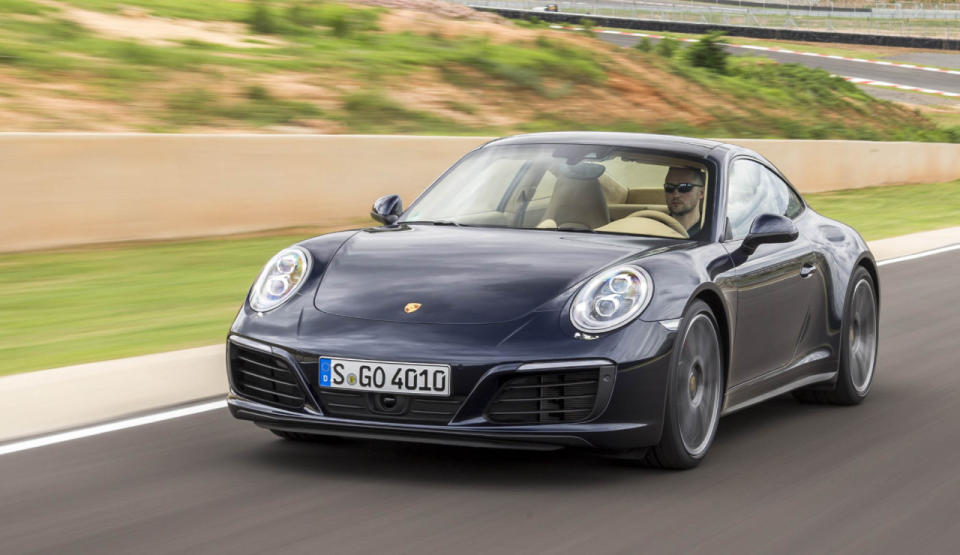
My car to Kyalami, where the 911 Turbo and Turbo S await, is the all-new turbocharged 911 Carrera 4. Manual, I might add, and beige leather as soft as a lion’s mane. Talking of, a short hop outside of the city, the land is teeming with zoo-like creatures—from elephants that can topple trucks to tourist-hungry hippos. I won’t be on the menu for another 24 hours—that is, if I make it past the homeless man perched on the hood of my 911, a dusty cardboard sign reading: “My wife is kidnapped by ninjas, please help with R5. KUNG FU!”
Five rand is around 30 cent, and “kung fu” is something I assume you should know in order to escape these ninjas. My kung fu is subpar, and I don’t want to buy a dishcloth from the other gentleman to my left, nor a banana from the approaching lady—perilously crossing a busy intersection without allowing her steely gaze to waver from the Porsche I’m within.
I drive on. The caliber of cars in Johannesburg is impressive, with every fifth one seemingly a BMW. The wealthy neighborhoods are protected by walls large enough to guard a medieval fortress. Only here they have electric fences on top, just in case you fancy yourself as the next Bear Grylls. Nestled in between these rich white colonies are shantytowns. At first glance they appear to be junkyards, until you notice these scraps are actually family homes. Six-by-six foot slabs of corrugated iron are resting against one another, with filthy plastic chairs—some with broken legs—providing a vague resemblance of a sofa.
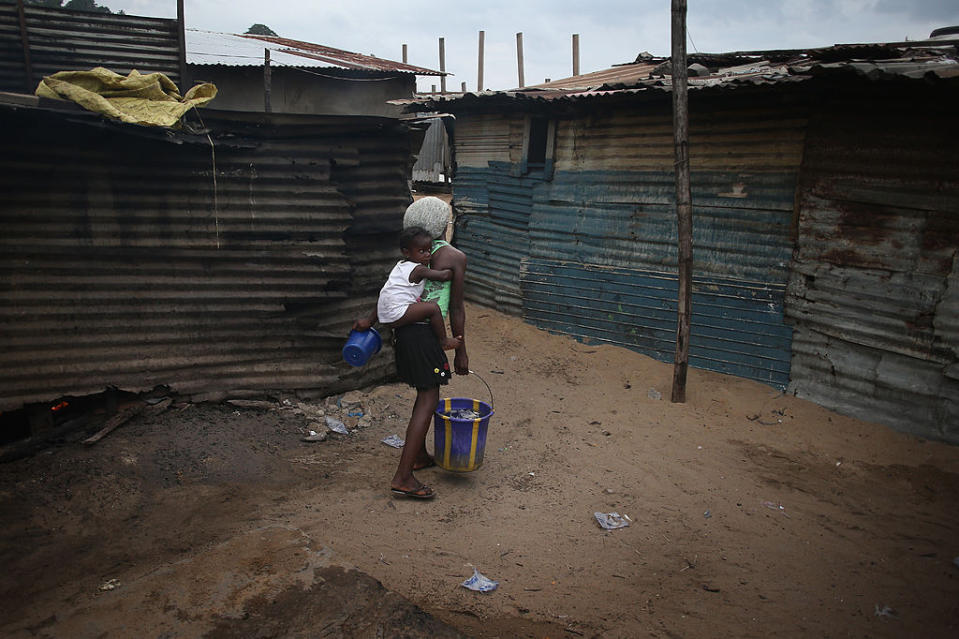
Kids are rushing around playing, seemingly without a care in the world, while their mothers carry buckets of water gathered from a small tap the other side of the village. The pain is written across their faces, and I can’t help but feel ashamed—as I’m driving a $130,000 Porsche—that we, as a society, allow people to suffer this way. Less than a mile down the road I see a shopping mall, filled with Gucci and their corresponding purses. The balance between utter poverty and excessive wealth remains far greater than I imagined.
As for the car, the 911 Carrera 4 handles the streets of Johannesburg without raising its heartbeat. Traffic is the order of the day, and by the time I get to Kyalami—a racetrack opened in 1961 that saw 20 Formula One Grand Prix—I’m ready to hit the circuit.
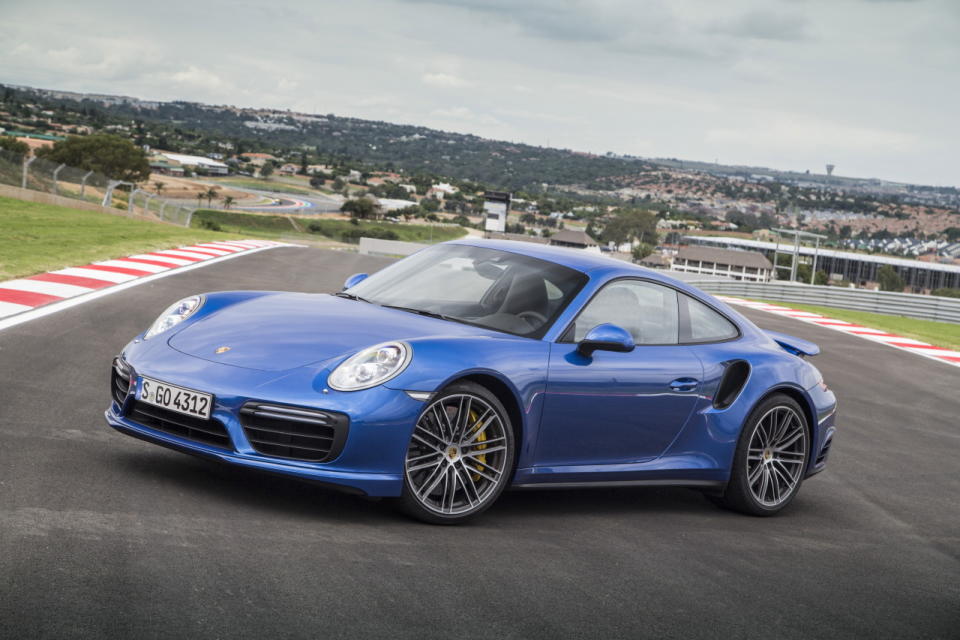
The 2017 911 Turbo and Turbo S, in all honesty, sees little changes over the outgoing model. Both muster gains of 20 additional horsepower, clocking in at 540 and 580-hp respectively. That ensures 0-60 mph arrives 0.2 of a second faster (2.9 and 2.8), which is something you won’t notice unless you’re driving the old car back-to-back.
Frankly, if you like the outgoing Turbo, you’ll like the new Turbo. Sure, “dynamic boost” keeps the throttle valve open when lifting off, ensuring the twin turbochargers retain better pressure. But lag is still noticeable, and yet the 3.8-liter flat six and its improved all-wheel-drive system bursts out of turns in a way that causes you to stop giving a shit. Active aero helps determine the right balance between downforce and slipperiness, depending on the type of driving that you’re doing. A new “Sport Response” button on the steering wheel instantaneously volts you from whatever drive mode you’re using into “Sport +” for 20 seconds, perfect for those last ditch overtaking maneuvers on a country road.
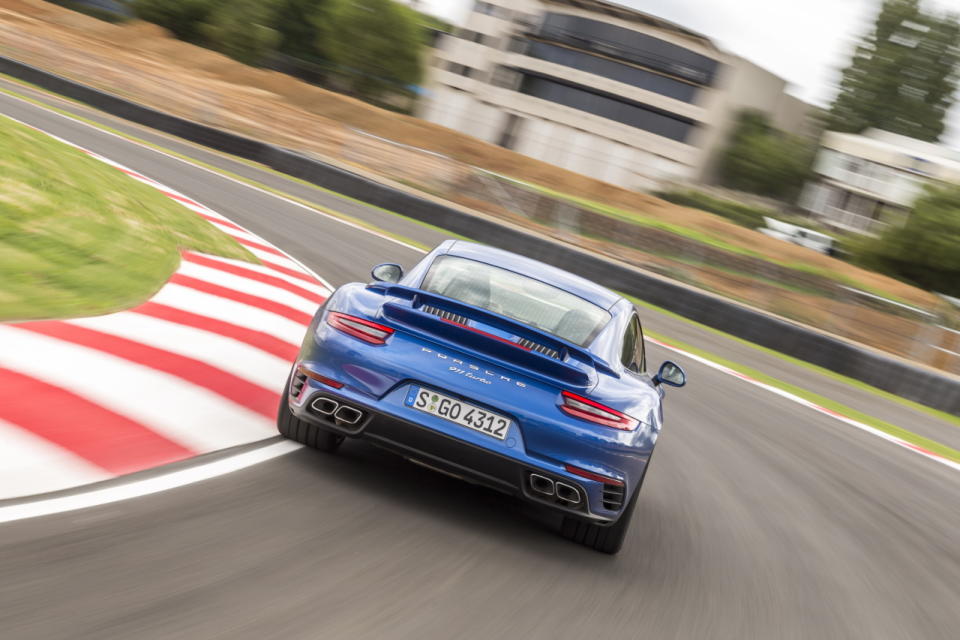
As for the handling on track, it’s as you expect from a 911 Turbo or Turbo S: Blindingly quick, precise, more roll-y than a 911 GT3 or GT3 RS, and with a dollop of extra understeer. Braking is excellent, although the ABS tends to kick in too soon, and the speed is intoxicating. It’s a car, like its predecessor, that’s as at home running errands as it is on the track—a machine with a character as varied as Johannesburg’s landscape.
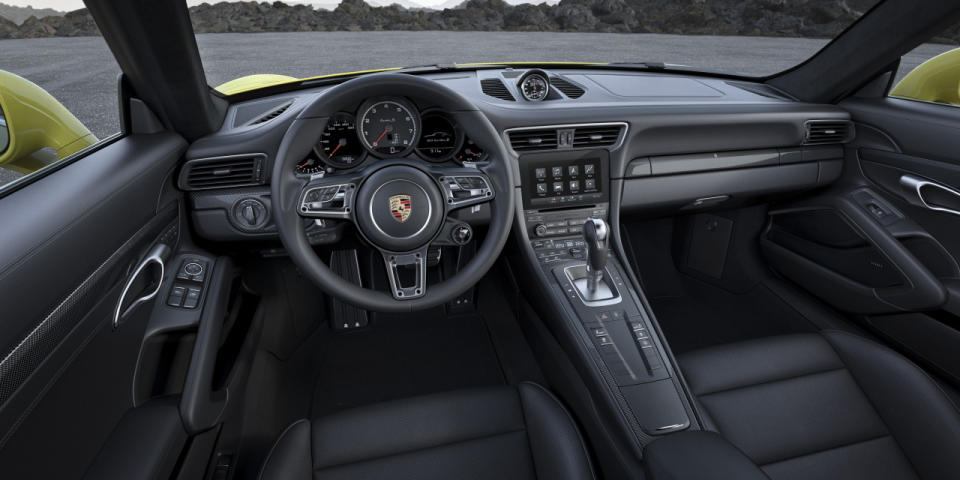
The biggest changes to the 2017 Porsche 911 Turbo and Turbo S arrive in the form of technology. Lane-keep-assist can be optioned, and emergency brake avoidance is standard. The infotainment system is modernized, featuring Apple CarPlay, and works via gesture control. The steering wheel is reminiscent of that found in the 918 Spyder, and the price remains a tear-inducing $159,200 for the Turbo and $188,000 for the Turbo S, before you select any options.
And so it remains a great sports car, just as it always has been. But the real star here is South Africa.
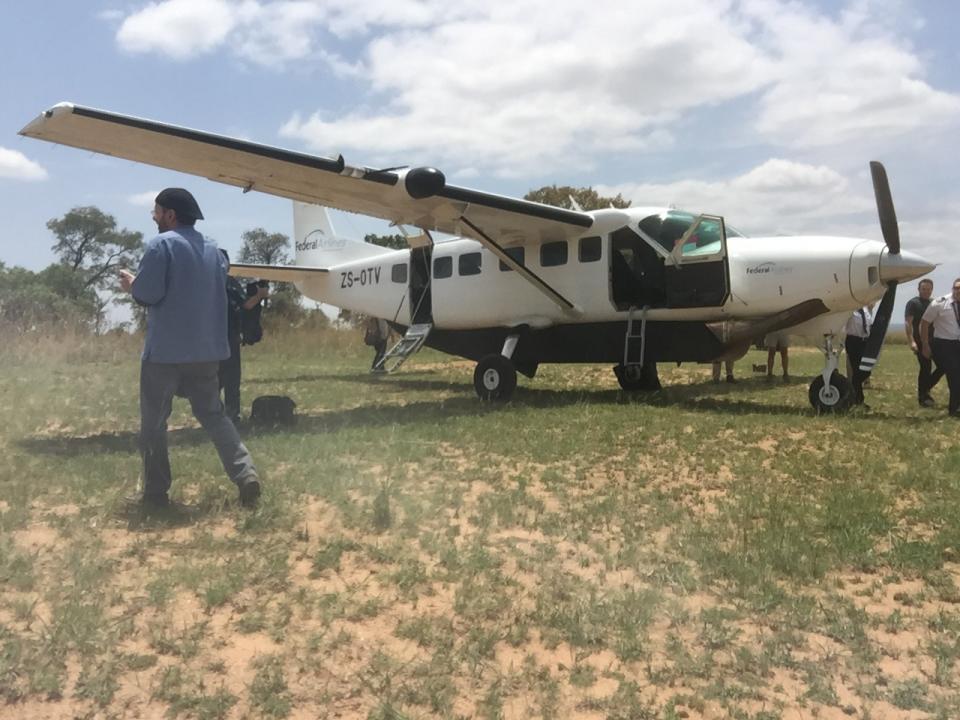
The next morning I hop on a 30-minute plane ride, aboard a tiny, unpressurized Cessna 208B Grand Caravan, filled with jetlagged, slightly pungent Americans. The captain informs us that prior to landing, we’ll need to pull a Top Gun-esque fly by. Only we’re not trying to “buzz” the tower. Here, we’re searching for game that might be wandering across our grassy runway.
From the window we see zebra, an elephant, and a herd of buffalo. None are on the strip of dirt we’re set to land on, and so down we go. A Toyota waits, with three-row theater seating and an external roll cage. Our safari guide tells us the cage helps guard the roughly $28,000 car should an elephant decide it makes for a nice looking dice.
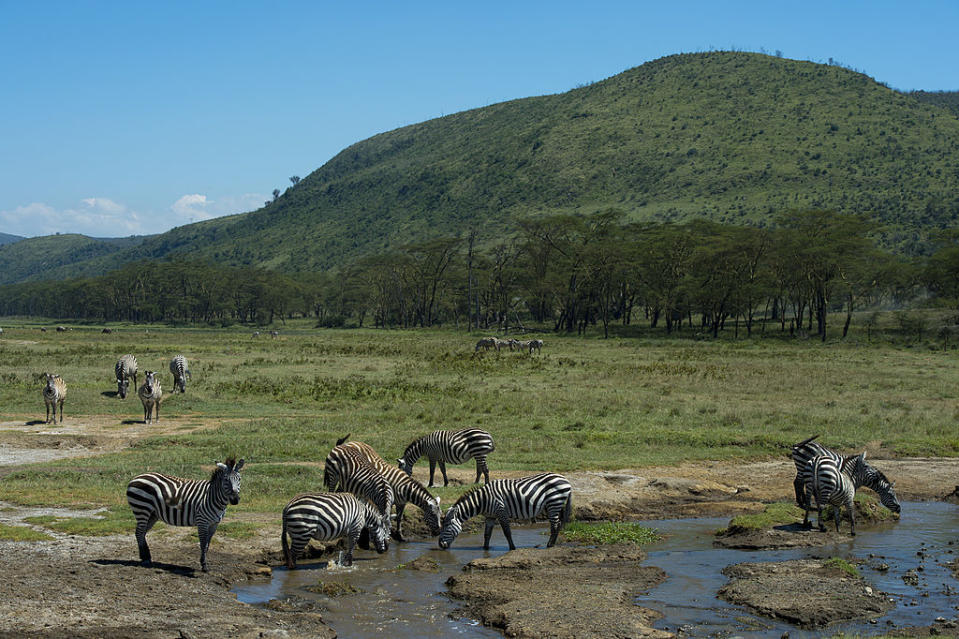
The sun beams down, shimmering off the water holes. Zebras are drinking, a crocodile lurking just yards away—its eyes the only part of its 15-foot body visible above the water’s surface. Our guide says crocs can hide in the same pond for up to three months before striking. That’s some serious patience, something our man says he often has to exercise himself when confronted with rowdy tourists: “Once a guy got out of the car and tried to take a close-up picture of a hippo,” he tells us.
“Was he injured,” we ask.
“No, he says, nonchalantly.
“Dead?” he continues. “Yes. He was quite dead.”
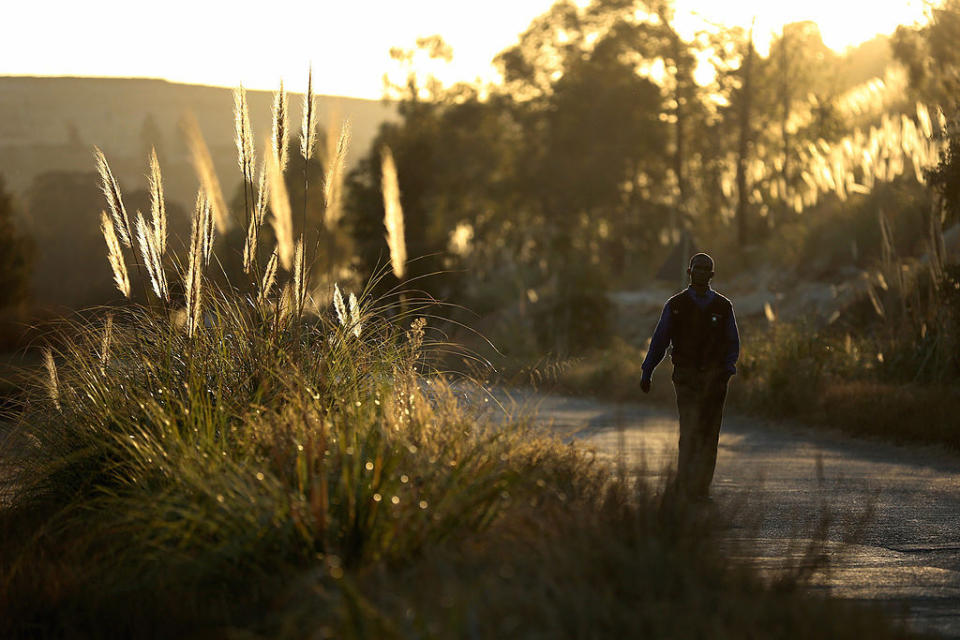
From the bustling streets and shantytowns of Johannesburg to the desolate plains providing the backdrop to the Mabula game lodge, South Africa is a fascinating place. Like the 911 Turbo, you really need to experience both sides of its personality. And don’t be fearful of its ruthless reputation. It truly is spectacular, a place marred by crime statistics. The people, too, are lovely. Just beware of the ninjas.

